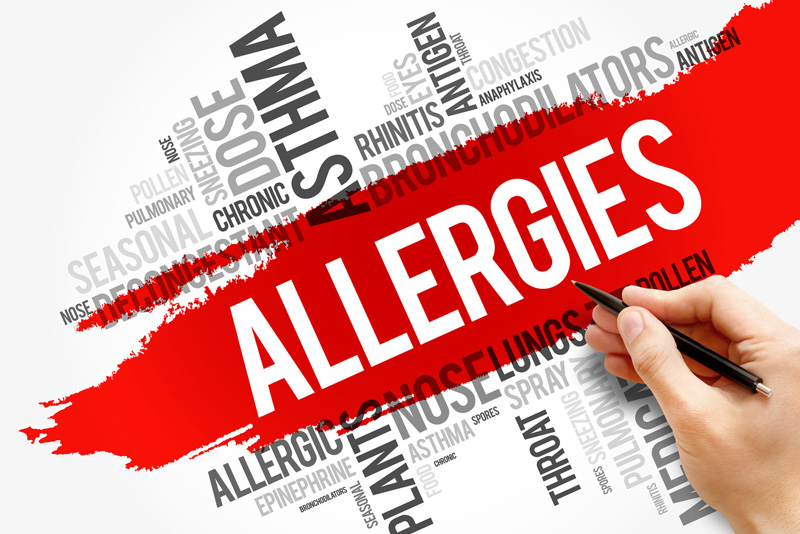Spring is not only a time to return to outdoor activities, it can also cause certain ailments. To enjoy spring, it is important to be prepared for potential illnesses and health problems. Spring keeps Emergency Departments and Urgent Care Centers busy, as such centers are dedicated to providing emergency care as well as treatment for non-life-threatening injuries and illnesses that require prompt care.
Professional medical billing services in USA can provide coding support for such centers.
Let’s take a look at some of the most common conditions that lead to urgent care visits during spring and the ICD-10 codes to report them.
Allergies
Allergies are common in spring because it is the time when trees and plants bloom and pollen from flowers can get carried in the wind. These allergies usually come with symptoms such as stuffy nose, frequent sneezing, dreadfully runny eyes, congestion and more and are often mistaken for a cold or infection. Seasonal allergies are called hay fever or allergic rhinitis. According to the 2014 National Health Interview Survey (NHIS), 8.4% of US children under age 18 suffered from hay fever, 10% from respiratory allergies, 5.4% from food allergies, and 11.6% from skin allergies. Allergic rhinitis can be managed by avoiding, eliminating or decreasing exposure to the irritants or allergens that trigger symptoms, medication and immunotherapy (allergy shots).
The ICD-10 codes to report allergic rhinitis are –
- J30 Vasomotor and allergic rhinitis
- J30.0 Vasomotor rhinitis
- J30.1 Allergic rhinitis due to pollen
- J30.2 Other seasonal allergic rhinitis
- J30.9 Allergic rhinitis, unspecified
Listen to this podcast: “Reporting Allergic Rhinitis – A Common Allergy Condition”
Influenza
Also known as flu, influenza is most common during the fall and winter. This highly contagious respiratory illness is caused specifically by influenza viruses. According to the CDC, flu activity mostly peaks between December and February, although it can last as late as May. Travelers are more affected by flu than other people. Key symptoms of influenza include a runny nose, sore throat, fever, body aches, cough, headache, chills, exhaustion and fatigue, congestion, vomiting, diarrhea and more. It is important to be vigilant and practice hand washing, especially while traveling. Flu vaccines are often readily available at this time of year.
Influenza ICD-10 Codes
- J10 Influenza due to other identified influenza virus
- J10.0 Influenza due to other identified influenza virus with pneumonia
- J10.1 Influenza due to other identified influenza virus with other respiratory manifestations
- J10.2 Influenza due to other identified influenza virus with gastrointestinal manifestations
- J10.8 Influenza due to other identified influenza virus with other manifestations
- J11 Influenza due to unidentified influenza virus
- J11.0 Influenza due to unidentified influenza virus with pneumonia
- J11.00 Influenza due to unidentified influenza virus with unspecified type of pneumonia
- J11.08 Influenza due to unidentified influenza virus with specified pneumonia
- J11.1 Influenza due to unidentified influenza virus with other respiratory manifestations
CPT Codes for Flu Vaccines
- 90630 Influenza virus vaccine, quadrivalent (IIV4), split virus, preservative free, for intradermal use
- 90653 Influenza vaccine, inactivated (IIV), subunit, adjuvanted, for intramuscular use
- 90654 Influenza virus vaccine, trivalent (IIV3), split virus, preservative-free, for intradermal use
- 90655 Influenza virus vaccine, trivalent (IIV3), split virus, preservative free, 0.25 mL dosage, for intramuscular use
- 90656 Influenza virus vaccine, trivalent (IIV3), split virus, preservative free, 0.5 mL dosage, for intramuscular use
- 90657 Influenza virus vaccine, trivalent (IIV3), split virus, 0.25 mL dosage, for intramuscular use
- 90658 Influenza virus vaccine, trivalent (IIV3), split virus, 0.5 mL dosage, for intramuscular use
- 90660 Influenza virus vaccine, trivalent, live (LAIV3), for intranasal use
Read: “Coding and Billing Influenza Vaccinations 2020-2021”
Asthma
Asthma is a chronic condition in which the airways of the lungs become inflamed and narrow, often due to environmental triggers such as outdoor or indoor allergens, cold air or exercise. Spring is a bad time for those sensitive to such natural triggers, as tree pollens, mold spores and grass all have the power to inflame and narrow the air passages. Common symptoms of an asthma attack include wheezing, shortness of breath, chest tightness and coughing. Medical attention is important if the patient struggles to breathe even after using an inhaler. During spring, asthma patients are often advised to limit their outdoor activities.
- J45 Asthma
- J45.2 Mild intermittent asthma
- J45.3 Mild persistent asthma
- J45.4 Moderate persistent asthma
- J45.5 Severe persistent asthma
- J45.9 Other and unspecified asthma
- J45.99 Other asthma
Listen to the podcast, “ICD-10 Codes for Reporting COPD and Asthma”
Lyme Disease
Spring is considered the peak time for Lyme disease, a condition caused by Borrelia burgdorferi bacteria. The disease is transmitted to humans when they bitten by infected blacklegged ticks or deer ticks. While the common early symptom of this disease is a bull’s eye rash caused by the tick bite. Other common symptoms include fatigue, fever, chills, headache, and muscle and joint pain. Lyme disease is diagnosed through medical history, a physical exam, and sometimes a blood test and is mainly treated with antibiotics. Strategies to avoid getting bitten include not walking in tall vegetation and using tick repellent when spending time outdoors.
- A69.2 Lyme disease
- A69.20 Lyme disease unspecified
- A69.21 Meningitis due to Lyme disease
- A69.22 Other neurologic disorders in Lyme disease
- A69.23 Arthritis due to Lyme disease
- A69.29 Other conditions associated with Lyme disease
Read: “Lyme Disease – Its Clinical Documentation and Coding”
There are much more conditions urgent care centers treat in the spring season. People should not wait for their symptoms or conditions worsen to get care as this can complicate the condition.
Experienced medical billing and coding companies understand all the challenges associated with emergency room medical coding and support physicians by ensuring accurate claim submission.




